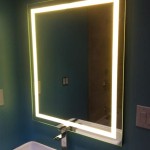How Do I Mirror My Mac Screen On Apple TV?
Mirroring a Mac screen to an Apple TV allows users to view their computer's display on a larger television screen. This functionality benefits presentations, entertainment sharing, and extending the workspace. Several methods facilitate this process, each offering unique advantages depending on the user's specific needs and setup.
Using AirPlay
AirPlay is Apple's proprietary technology for wirelessly streaming audio and video content between devices. It's the most common method for mirroring a Mac screen to an Apple TV and offers a seamless experience when both devices are on the same Wi-Fi network. To mirror the Mac screen using AirPlay, users should click the Control Center icon in the menu bar, select "Screen Mirroring," and then choose their Apple TV from the list of available devices. If the AirPlay icon isn't visible in the Control Center, it can be added through the Control Center preferences in System Preferences.
Once connected, the Mac's display will be mirrored on the television screen. Adjusting the resolution of the mirrored display can be accomplished through the Display settings in System Preferences. Users can choose to mirror the Mac's display exactly or use the television as a separate extended display. The AirPlay connection can be disconnected by clicking the AirPlay icon in the menu bar and selecting "Stop Mirroring."
AirPlay mirroring generally provides smooth performance for basic tasks like web browsing, presentations, and watching videos. However, for activities that require high frame rates, such as gaming or video editing, users might experience some latency. The performance of AirPlay mirroring is also dependent on the strength and stability of the Wi-Fi network.
Connecting with a Wired Connection
While AirPlay offers a convenient wireless solution, a wired connection provides a more stable and reliable mirroring experience, particularly for demanding tasks. This method requires a compatible cable, typically an HDMI cable, and a suitable adapter if the Mac doesn't have an HDMI port. One end of the HDMI cable is connected to the Mac's HDMI port or adapter, while the other end is connected to an available HDMI port on the television. The Apple TV should be connected to the same television.
After connecting the cable, users should select the correct HDMI input on their television using the television's remote control. The Mac's display will then be mirrored on the television. Similar to AirPlay, the resolution and display arrangement (mirrored or extended) can be adjusted through the Display settings in System Preferences.
A wired connection eliminates potential Wi-Fi interference and offers significantly reduced latency, making it ideal for activities requiring smooth, real-time performance, like gaming or using professional video editing software.
Troubleshooting Common Mirroring Issues
Occasionally, users may encounter issues when attempting to mirror their Mac screen to an Apple TV. Common problems include the Apple TV not appearing in the list of available AirPlay devices, poor mirroring performance, or no connection at all. Several troubleshooting steps can help resolve these issues.
First, it's crucial to ensure that both the Mac and the Apple TV are on the same Wi-Fi network and that the network is functioning properly. Restarting both devices can often resolve minor software glitches that might be interfering with the connection. Checking for software updates on both the Mac and Apple TV is also recommended, as outdated software can sometimes cause compatibility issues.
If the problem persists, users can try resetting the network settings on both devices. This process can vary depending on the specific operating system versions, but it generally involves forgetting the current Wi-Fi network and reconnecting. For wired connections, ensure the cables are securely plugged in and that the correct HDMI input is selected on the television.
If none of these steps resolve the issue, consulting Apple's support documentation or contacting their customer support team may be necessary.
Choosing the appropriate mirroring method depends on the specific needs of the user. AirPlay offers convenience for basic tasks, while a wired connection provides the stability required for demanding applications.
Optimizing Mirroring Performance
Regardless of the chosen method, several strategies can optimize the mirroring performance. Closing unnecessary applications on the Mac can free up system resources and improve responsiveness. Reducing the resolution of the mirrored display can also enhance performance, particularly for wireless connections. Additionally, ensuring that the Mac and Apple TV are within close proximity can strengthen the Wi-Fi signal and minimize latency for AirPlay mirroring.
For users experiencing persistent performance issues with AirPlay, upgrading to a newer Wi-Fi router that supports faster speeds and improved stability might be beneficial. Using the 5 GHz Wi-Fi band, if available, can also offer better performance compared to the 2.4 GHz band, as it's less susceptible to interference.
Using Third-Party Apps
While AirPlay and wired connections are the primary methods for mirroring a Mac to an Apple TV, third-party applications offer alternative solutions. Some apps provide additional features, such as customized display arrangements or enhanced streaming capabilities. Researching and selecting a reputable third-party app may provide a solution tailored to specific user requirements.

How To Mirror A Mac An Apple Tv Using Airplay

How To Use Apple Airplay Mirror Your Iphone Mac Screen On Tv Roku And More Cnet

How To Mirror A Mac Tv Osxdaily

Stream Audio And From Your Mac With Airplay Apple Support

Use Airplay To Stream What S On Your Mac An Hdtv Apple Support

How To Mirror A Mac Tv Osxdaily

How To Use Apple Airplay Mirror Your Iphone Mac Screen On Tv Roku And More Cnet

How To Mirror Or Extend Your Mac Display Apple Tv

How To Mirror A Mac An Apple Tv Using Airplay

How To Airplay On Mac








